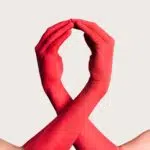Day Without Art is on December 1, coinciding with World AIDS Day. Since its inception in America in 1989, this day has marked the impact of the AIDS epidemic on the artistic community and documented efforts in fighting AIDS. On this holiday, artists and art institutions shut their doors, dim the lights, and shroud their works, replacing them with posters and facts about AIDS. Others screen films and documentaries for audiences online and in theaters. Day Without Art is also a day of mourning as memorials are a standard part of proceedings.
History of Day Without Art Day
Day Without Art began on December 1, 1989. Visual AIDS, an organization founded in 1988 by Robert Atkins, writer and art critic, and three curators — Gary Garrels, Thomas Sokolowski, and William Olander introduced this observation. Visual AIDS brought together the arts and AIDS communities through national projects — Day Without Art was one of these projects.It was envisioned as a day of mourning and action, involving hundreds of art organizations and institutions in a rallying call to display the power of art in raising awareness. Over 800 art galleries, museums, and institutions in the U.S. covered up their displays, replacing them with posters educating people about HIV and safe sex. Artists and curators conducted memorials and readings, including visual arts exhibitions and performances. They celebrated the achievements and lives of colleagues and friends they had lost to AISs, encouraging better care for patients and support to discover a cure.Visual AIDS used posters in the early days of its campaign to increase publicity for Day Without Art. They also used memorial quilts, which helped get the public involved. The movement’s inclusivity was a novel approach when most of the U.S. were either aloof or biased against people with AIDS. The stigma made it difficult to hold conversations about the topic. The Arts community was one of the few that acknowledged the AIDS epidemic and its effect on cultural life. Through Day Without Art, Visual AIDS became one of the first national initiatives dedicated to fighting AIDs and supporting patients. More than 30 years later, Visual AIDS continues with its Day Without Art projects in what is now a global movement involving thousands of artists and members of the public.
Day Without Art Day timeline
Artists, curators, and members of the creatives community come together to form Visual AIDS.
A year after founding Visual AIDS, hundreds of art galleries and institutions in the U.S. observe the first Day Without Art.
Visual AIDS incorporates film screenings into Day Without Art celebrations.
For the 10th anniversary of Day Without Art, Visual AIDS distributes "Alternate Endings," a series of commissioned videos screened at select venues worldwide.
Day Without Art Day FAQs
What does ART mean in AIDS?
ART stands for antiretroviral therapy, the treatment for HIV. ART is administered only to HIV-positive individuals.
Can ART prevent HIV/AIDS?
People on ART are less likely to transmit HIV to others. HIV stands for Human Immunodeficiency Virus.
What are five causes of AIDS?
People can get HIV/AIDS through sexual intercourse, sharing needles, blood transfusions, pregnancy/delivery, and breastfeeding.
How to Observe Day Without Art Day
-
Organize a screening
Since 2010, Visual AIDS, an organization supporting HIV-positive artists and raising awareness of AIDS, has released video programs at coordinated events worldwide. On Day Without Art, organize a screening for your community. Some screenings are available internationally and online.
-
Make a poster
Advocacy and awareness are the purposes of the day. Make a poster educating others on the importance of safe sex, regular screening, and knowing the facts about AIDS. Knowledge is power; the more informed people are, the more allies the movement has.
-
Local advocacy and outreach
Reach out to your local legislators. Coordinate efforts with other community members to lobby for better support, treatment, and care for persons with AIDS. Let them know how important this issue is. AIDS advocacy groups have a powerful voice, and a sizable organization can pressure leaders into acting on the problem.
5 Important Facts About AIDS
-
Women under 50
AIDS is the number one killer of women aged below 50 years.
-
Millions have this condition
Globally, around 37 million people live with HIV/AIDS, matching almost the entire population of Canada.
-
Nearly 1,000 women are infected every day
Nearly 1,000 young women are infected daily with HIV/AIDS, amounting to 40 women per hour.
-
Women in Africa are at greater risk
Young women in sub-Saharan Africa are twice as likely to be infected with HIV/AIDS than young men.
-
Cost of treatment has reduced significantly
The cost of antiretroviral treatment dropped from $10,000 annually to just $75.
Why Day Without Art Day is Important
-
Advocacy is the answer
Though the medical fraternity and the world, in general, have come a long way in the care and treatment of AIDS, there's still a lot of work to do. Addressing the underlying issues that exacerbate the problem, such as homophobia, racism, and poverty, must also be a part of the movement. Beyond raising awareness and honoring the lives of the AIDS community, Day Without Art is committed to advocacy so that persons affected by this disease can get the social, economic, and political support they deserve.
-
Art transcends all barriers
Art is a powerful tool for bringing people together for a cause. It's inclusive, accessible, and most importantly, it's public. A poster increasing awareness and teaching safe sex is something everyone can understand and learn from, regardless of their background or demographic.
-
Keeping the conversation alive
AIDS has been with us for so long that most people are either indifferent or get fatigued by any mention of it. Day Without Art keeps the conversation on AIDS going in a unique and thought-provoking way. There's no limit to how you can express the message and spirit of this holiday.
Day Without Art Day dates
| Year | Date | Day |
|---|---|---|
| 2022 | December 1 | Thursday |
| 2023 | December 1 | Friday |
| 2024 | December 1 | Sunday |
| 2025 | December 1 | Monday |
| 2026 | December 1 | Tuesday |
















































